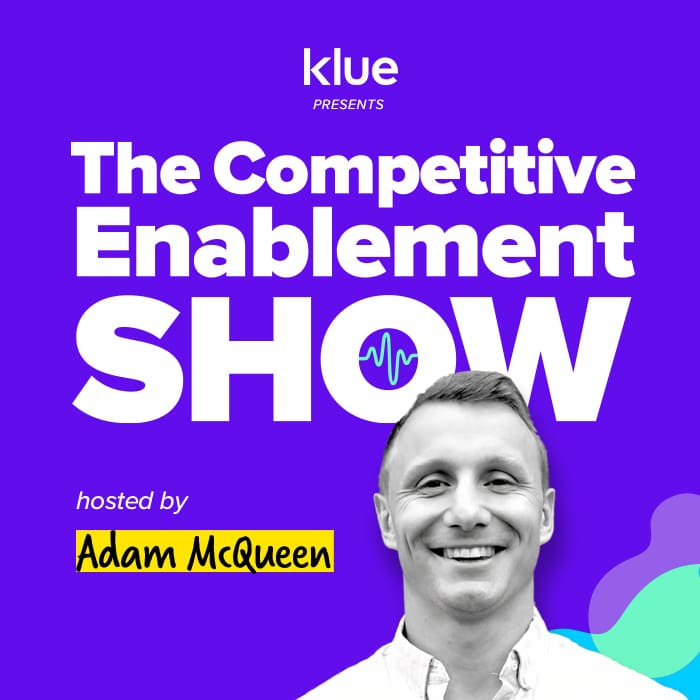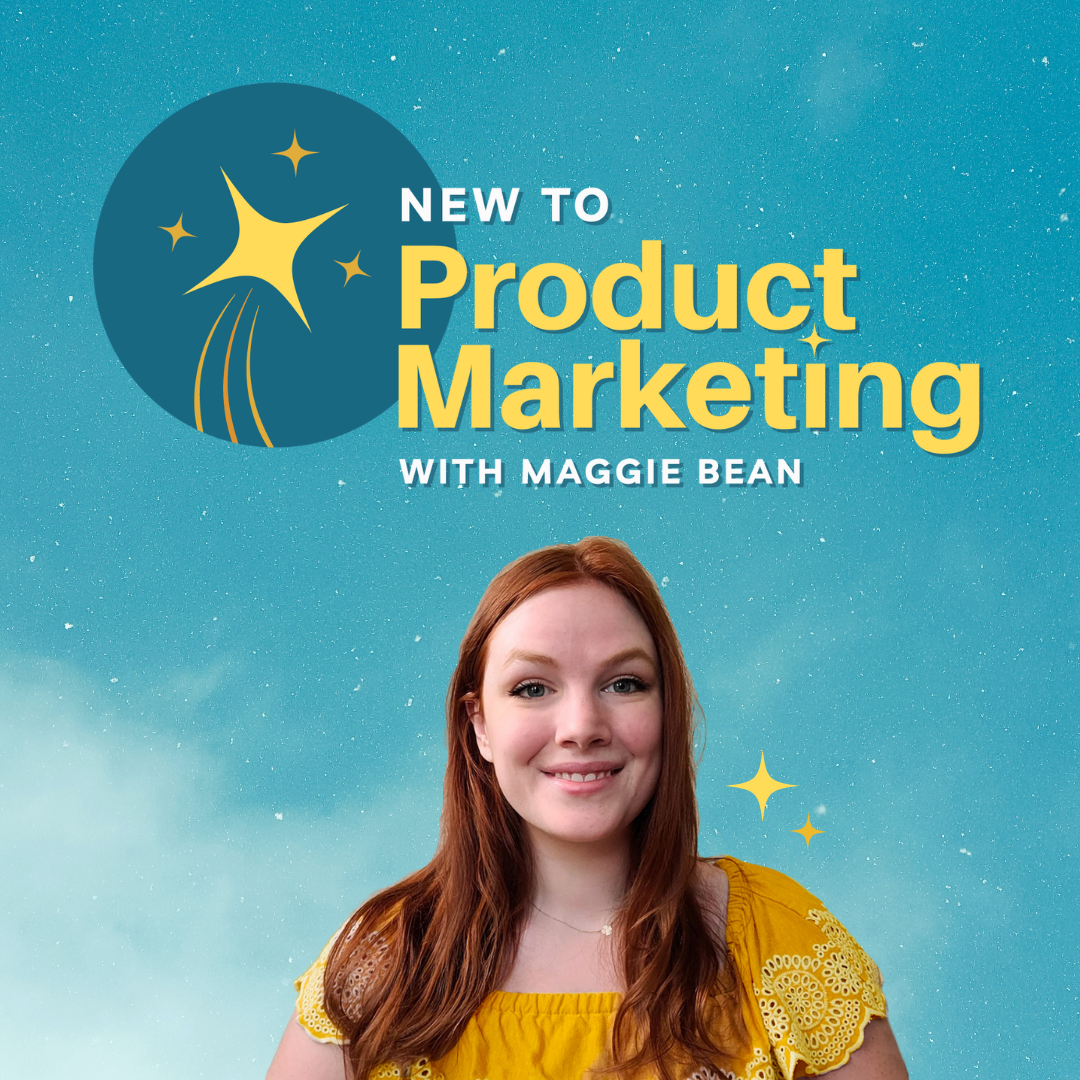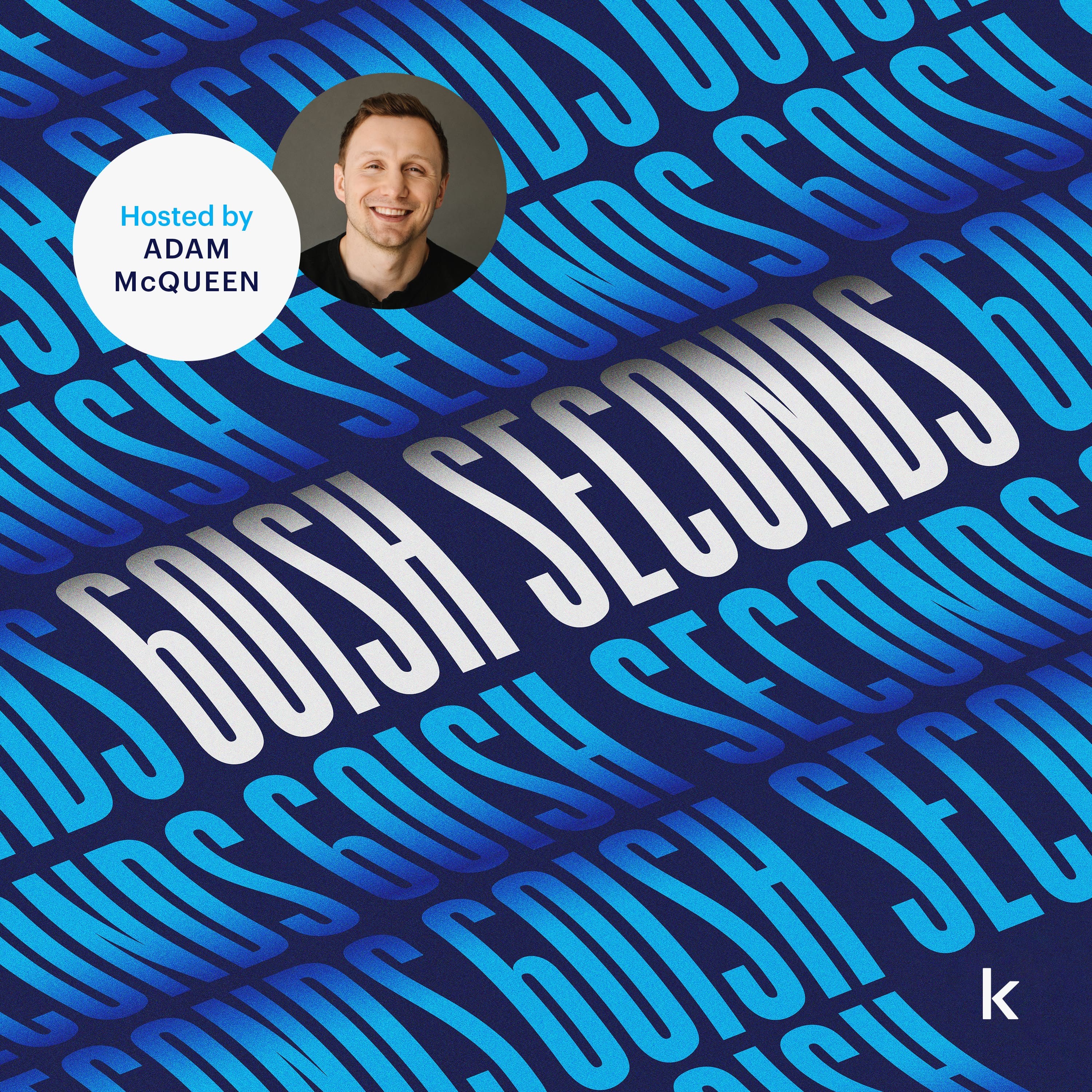Nailing Your First 90 Days on the Job | Andrew McCotter-Bicknell, ClickUp
The Sparknotes
Seek feedback and opinions from your cross-functional partners early and often
“I’ve tried…getting as much feedback and crowdsourcing approval as much as possible. I don’t change every single thing based on someone’s opinion, but [I get] everyone’s take.
Getting strategic partners like leadership and sales to buy into your competitive enablement program is something we’ll scream until the cows come home.
And while compete experts know the importance of this kind of buy-in, ClickUp’s Andrew McCotter-Bicknell knows how to do it.
Especially in the early stages of your compete program — whether you’re building from scratch or inheriting an existing program — the way to get buy-in is to talk to people. Specifically, ask for their input. Andrew can speak to this from his experience building competitive enablement at ZoomInfo prior to his role at ClickUp:
“One of those big mistakes I made is not getting feedback early on and waiting a really long time to consider my target audience — whoever’s most going to use the battlecard.”
Failure to get that kind of feedback and input resulted in Andrew stumbling out of the gate when it came to battlecards.
A lack of brevity and overuse of marketing slang led to a sales leader bluntly stating: I’m not going to use these.
But after a teardown and reformulation based on the feedback from that sales leader, Andrew’s V2 battlecards hit the mark.
His advice to other competitive enablement experts:
- Always remember who your audience is and tailor content to their needs.
- Seek out your colleagues’ opinions before you get down to work.
Consistently deliver content to build trust in your program
“Don’t be afraid to publish…you need to start delivering and helping people out as quickly as possible”
Building relationships is about building trust. And building trust is about showing yourself to be consistently reliable.
For competitive enablement experts starting out in a new role, there needs to be an early focus on producing content.
This will allow you to form the narrative around your role: a competitive expert who puts out consistent content that helps win more deals.
And while it goes without saying that there is a need to make sure that content is valuable, it’s important to not get too precious about your competitive content.
In other words, good and shipped is better than a work in progress aspiring to perfection.
You have the power to set the tone for your competitive program. A tone that should illustrate your and your team’s ability to start producing content as soon as possible.
As long as you’re doing your due diligence by seeking feedback and opinions as mentioned in the first takeaway, don’t sit back and wait to create flawless content.
Get it out the door and iterate.
Measure and benchmark end-user confidence now to report on progress in the future
“If you can come back to your boss and say competitor confidence with our sales team improved from a 3 to a 4.4, that’s something for sure.”
Getting feedback from cross-functional partners and quickly producing content are two sure-fire ways to get quick wins for your compete program.
Another action you should take early on that will set you and your program up for success in the future is measuring sales confidence — against competitors and in your program.
“[For] people who are teams of one and looking for help in building out their competitive program…competitor confidence is a pretty easy one to track.”
Newer functions like competitive enablement, customer success before that, and even human resources well before that, require widely-accepted KPIs to measure success and results.
Sales confidence — and its newest iteration competitive confidence — is quickly becoming one of the most important metrics to help gauge the success of your competitive efforts.
Best of all, a Competitive Confidence Survey levels up your program in ways beyond just measuring success.
The survey gives you an opportunity to seek feedback from your sales team and helps you prioritize what kinds of content, and on which competitors, to focus right away.
Just make sure to run a survey at a regular cadence (ideally every quarter) so you can clearly show the progress you’re making.


NEWSLETTER

Competitive strategies in five minutes or less. Straight to your inbox.
The official newsletter of The Compete Network with the best compete content from Klue, our customers, and compete experts from around the industry. Coffee & Compete's got you covered.
















